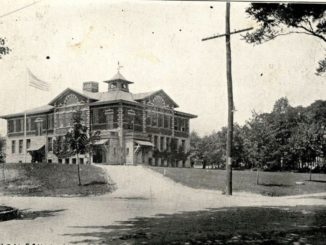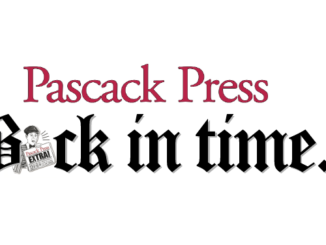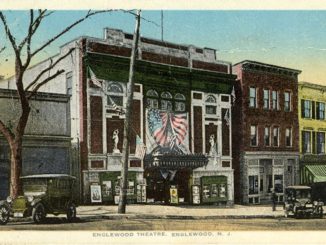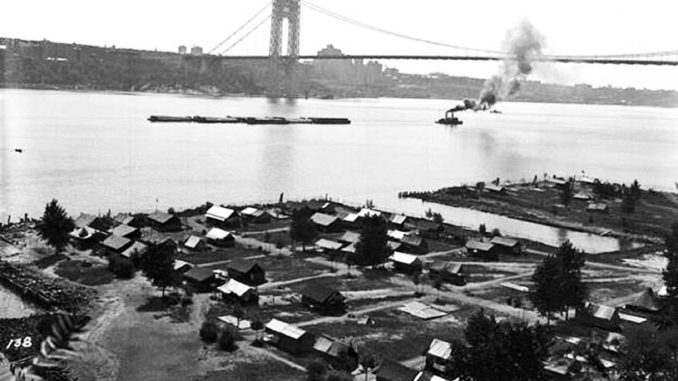
PALISADES INTERSTATE PARK, N.J.—We go back 80 years to Aug. 6, 1939, for this photograph taken at the Ross Dock Camp Colony that existed on the Palisades in the shadow of the George Washington Bridge.
At the time, the site included 30 rustic three-room cabins that people would rent on a weekly basis from April through December.
Ross Dock is just north of the former site of the Carpenter Brothers’ quarry in the late 19th century. This notorious operation was blasting 12,000 cubic yards of rock daily at its peak, according to news articles of the time. It was shut down in 1900 after a period of public outcry in favor of preserving the cliffs.
“Much of the present-day [Ross Dock] picnic area was built on sunken barges and other landfill from the quarry days,” according to a history from the Palisades Interstate Park Commission.
By the 1930s Ross Dock was used as a camping site for families from New York City. As many as 3,000 campers used the facility annually between late spring and early autumn, staying anywhere from one week to the entire season. Sometimes men would commute back to the city to work during the day and rejoin their families at the campsite in the evening.
The park’s Annual Report of 1932 noted, “Ross Dock Camp is equipped with many conveniences such as city water, hot and cold showers, sanitary sewerage…a rustic cabin housing the resident camp manager and camp store.”
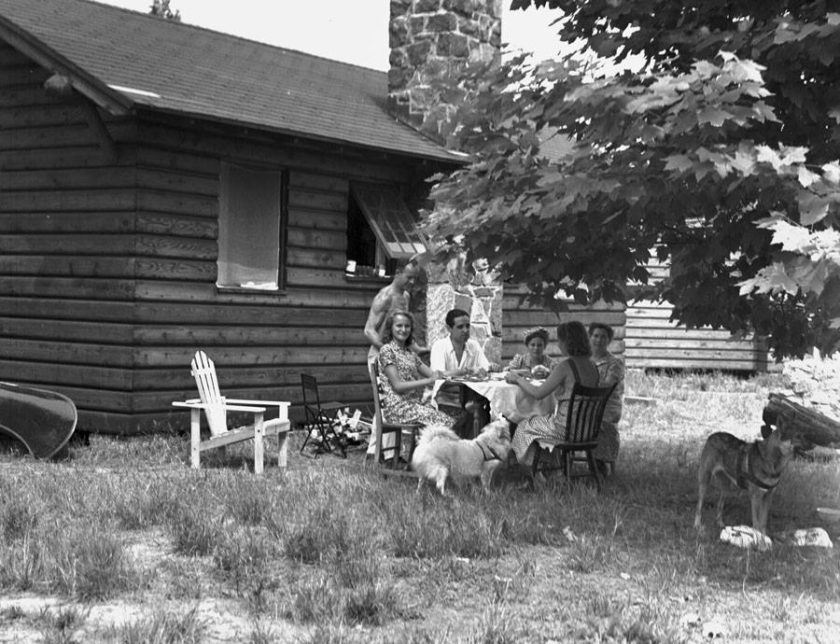
The location is named for P. Sanford Ross, a Newark investor and socialite from whom the Park Commission bought the land in 1917.
The Port Authority rented the location as a workers’ camp during the construction of the George Washington Bridge, built between 1927 and 1931.
By the middle of the 1930s, demand for camping spots was on the decline. In an attempt to boost public interest, the Park Commission replaced the tents with 30 three-room cabins (like the one shown above). During World War II public use of the camp was put on hiatus, although the spot was intermittently used for U.S. Army encampments.
Finally, in the mid-1940s, the cabins were torn down. The location was restored to a picnic area, which remains its use today.
Photos courtesy Palisades Interstate Park Commission

